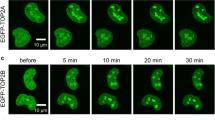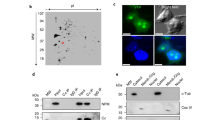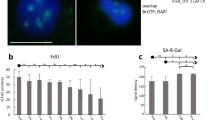Abstract
ACTINOMYCIN D (AM) suppresses DNA-directed RNA synthesis in vivo1. Because the nucleolus is believed to be the site of ribosomal RNA synthesis2,3, the effect of AM on this organelle is of particular interest and has been the subject of many studies4–7. It has been reported that both the morphological and physiological effects of AM can, in certain circumstances, be reversed8,9. In view of the extensive use of AM in cancer chemotherapy as well as in cellular metabolic studies, it is important to establish whether cell constituents such as the nucleolus can recover their normal function after temporary exposure to concentrations of AM known to be lethal to the intact cell. This question can only be answered by transplanting the nucleoli treated with drugs to normal cytoplasm—a procedure most easily accomplished in the large, free-living amoebae by nuclear transplantation. The object of this work is to determine to what extent the effect of lethal concentrations of AM on the amoeba nucleoli can be reversed.
This is a preview of subscription content, access via your institution
Access options
Subscribe to this journal
Receive 51 print issues and online access
$199.00 per year
only $3.90 per issue
Buy this article
- Purchase on Springer Link
- Instant access to full article PDF
Prices may be subject to local taxes which are calculated during checkout
Similar content being viewed by others
References
Reich, E., Cancer Res., 23, 1428 (1963).
Perry, R. P., Exp. Cell Res., 29, 400 (1963).
Caspersson, T., Farber, S., Foley, G. E., and Killander, D., Exp. Cell Res., 32, 529 (1963).
Stevens, B. J., J. Ultrastruct. Res., 11, 329 (1964).
Simard, R., J. Cell Biol., 35, 716 (1967).
Flickinger, C. J., J. Ultrastruct. Res., 23, 260 (1968).
Schoefl, G. I., J. Ultrastruct. Res., 10, 224 (1964).
Mittermayer, C., Braun, R., and Rusch, H. P., Exp. Cell Res., 38, 33 (1965).
Bal, A. K., and Gross, P. R., Science, 139, 584 (1963).
Prescott, D. M., and James, T. W., Exp. Cell Res., 8, 256 (1955).
Jeon, K. W., Life Sci., 4, 1839 (1965).
Jeon, K. W., and Lorch, I. J., Nature, 217, 463 (1968).
Prescott, D. M., Rao, M. V. N., Evenson, D. P., Stone, G. E., and Thrasher, J. D., in Methods in Cell Physiology (edit. by Prescott, D. M.), 2, 131 (Academic Press, New York, 1966).
Prescott, D. M., in Methods in Cell Physiology (edit. by Prescott, D. M.), 1, 365 (Academic Press, New York, 1964).
Goldstein, L., in The Use of Radioautography in Investigating Protein Synthesis (edit. by Lebnold, C. P., and Warren, K. B.), 79 (Academic Press, New York, 1965).
Reich, E., Franklin, R. M., Shatkin, A. J., and Tatum, E. L., Proc. US Nat. Acad. Sci., 48, 1238 (1962).
Hamann, W., Oehlert, W., and Hedderich, M., Virchows Arch., Abt. B, 1, 120 (1968).
Ord, M. J., Quart. J. Micros. Sci., 97, 39 (1956).
Author information
Authors and Affiliations
Rights and permissions
About this article
Cite this article
LORCH, I., JEON, K. Reversible Effect of Actinomycin D on Nucleoli of Amoeba discoides : Nuclear Transplantation Study. Nature 221, 1073–1074 (1969). https://doi.org/10.1038/2211073a0
Received:
Revised:
Issue Date:
DOI: https://doi.org/10.1038/2211073a0
This article is cited by
-
Actinomycin D and the central granules in the nuclear pore complex: Thin sectioning versus negative staining
Zeitschrift f�r Zellforschung und Mikroskopische Anatomie (1972)
-
Viability of Isolated Nuclei
Nature (1970)
Comments
By submitting a comment you agree to abide by our Terms and Community Guidelines. If you find something abusive or that does not comply with our terms or guidelines please flag it as inappropriate.



